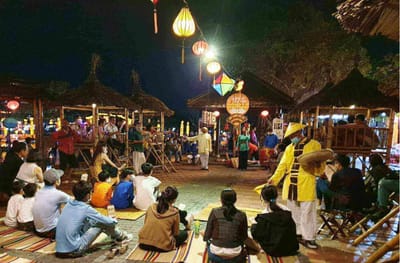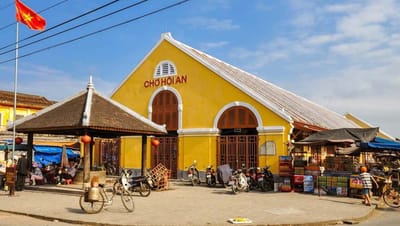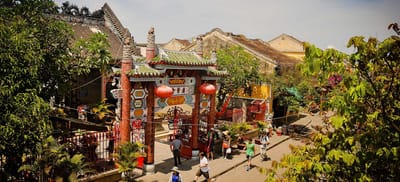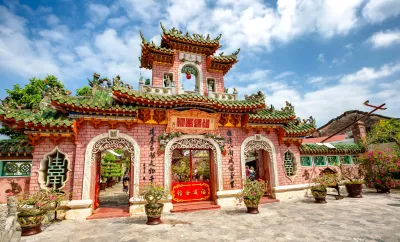Discover the Top 15 Must-See Attractions in Hoi An Old Town

Hoi An Old Town retains a wealth of historical and cultural attractions that reflect its vibrant multicultural heritage and centuries-long status as a key maritime port. This guide provides an authoritative overview of the 15 most significant sites in the Old Town area, offering visitors precise information to plan a meaningful and well-informed itinerary.
Iconic Must-See Attractions
1. Japanese Covered Bridge (Chùa Cầu)
Constructed in the late 16th century by Japanese merchants, the Japanese Covered Bridge remains the quintessential symbol of Hoi An. This wooden bridge features a traditional roof, intricately carved balustrades, and a small temple dedicated to the deity Tran Vu. Visitors can explore its interior to appreciate the craftsmanship and cultural blend encapsulated in this historic structure.
2. Tan Ky Ancient House
Built over 280 years ago, Tan Ky Ancient House exemplifies the distinctive Vietnamese tube house style infused with Chinese and Japanese architectural elements. This residence is remarkable for its preservation and continued use by the same family over seven generations. Exhibits include original furniture, altar pieces, and woodwork.
3. Fujian Assembly Hall
Serving as a religious and community center for the Fujian Chinese community, this assembly hall dazzles with its richly decorated roofs, wood carvings, and statues of deities such as Thien Hau—the sea goddess. Its architecture represents traditional southern Chinese temple design and remains an active place of worship.
4. Cantonese Assembly Hall
Erected by Cantonese merchants in the late 19th century, this hall is dedicated to the legendary General Guan Yu. It features exquisite wood and stone carvings, tiled roofs, and intricate murals. The hall hosts cultural events and festivals, offering insight into the local Chinese diaspora’s spiritual life.
5. Quan Thang Ancient House
This well-preserved merchant residence reflects traditional Chinese-Vietnamese domestic architecture and offers a glimpse into the daily life of historic trading families. Wood carvings and spatial organization emphasize the harmony between commerce and family life.
Important Cultural and Historical Sites
6. Museum of Trade Ceramics
The museum displays ceramics used for trade with Japan, China, and Southeast Asia during Hoi An's peak as an international port. These artifacts illuminate the town’s significance within regional and global trade networks and reflect the artistic excellence of various dynasties.
7. Museum of Folk Culture
Visitors can explore traditional lifestyles and customs of the Quang Nam region through artifacts, tools, and exhibits illustrating ancient agricultural practices, folk crafts, and community celebrations.
8. Central Market
The bustling market provides a vivid picture of local commercial life, offering fresh produce, textiles, and handicrafts. It remains a lively social hub and an excellent destination for immersion into contemporary local culture.
9. Thu Bon Riverfront
The riverfront walkway offers scenic views and the chance to observe sampan boats and evening lantern releases. It is a site for relaxation and social gatherings and connects key points of the Old Town.
10. Hoi An Night Market
Operating on An Hoi island after sunset, the night market showcases local handicrafts, souvenirs, and street food. Visitors experience vibrant cultural performances and the magical ambiance created by hundreds of illuminated lanterns.
Hidden Gems and Lesser-Known Sites
11. Hainan Assembly Hall
A smaller assembly hall dedicated to the Hainan community, it memorializes ancestors and represents a centuries-old tradition of diasporic worship.
12. Chaozhou Assembly Hall
Known for intricate woodwork and traditional ceremonies, this hall reflects the heritage of the Chaozhou people in Hoi An.
13. Phung Hung Ancient House
Built in the late 18th century, this house offers excellent examples of fusion Vietnamese-Chinese architecture and artisan woodcarvings.
14. Traditional Art Performance House
A venue showcasing traditional music and dance performances, it provides cultural insight into Hoi An’s intangible heritage.
15. Sa Huynh Museum
Dedicated to the prehistoric Sa Huynh culture, the museum presents archaeological findings that predate modern Vietnam and offer a broader historical context for the region.
Planning Your Visit
When visiting Hoi An Old Town, consider your available time and interests to prioritize attractions effectively:
- Short Visits (2-3 hours): Focus on the Japanese Covered Bridge, Tan Ky House, and Fujian Assembly Hall.
- Half-Day (4-5 hours): Include additional assembly halls, the Museum of Trade Ceramics, and a stroll along the riverfront.
- Full Day or More: Explore all 15 sites, visit museums, and experience both day and evening cultural events such as the Night Market.
Many attractions require an entry ticket, part of the Hoi An Old Town heritage ticket system, which grants access to five heritage sites. Planning your itinerary around ticket availability maximizes your experience and supports local conservation efforts.
Conclusion
Hoi An's Old Town is a richly layered heritage site where visitors encounter diverse cultural imprints expressing centuries of maritime commerce, community life, and artistic achievement. This guide aims to assist travelers in navigating these attractions with accuracy and respect, enhancing appreciation for one of Southeast Asia’s most significant historical towns.
No spam, no sharing to third party. Only you and me.






